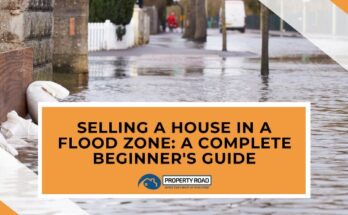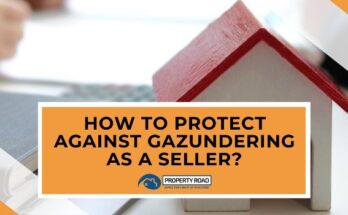When it comes to selling a property, there are many potentially stressful things that need to be done.
One such thing is the legal transaction that transfers ownership of the property from you to your buyer. But, what is the conveyancing process when selling a house?
In this article, we’ll use our experience of selling multiple houses to tell everything you need to know to ensure selling your home goes as smoothly as possible.
Note that if you’re also buying a property, the process is a little different. We’ve covered the conveyancing process when buying a house in a previous article.
Selling A Property? FREE Step-By-Step Platform
The conveyancing process when selling a house in 10 steps

In our experience, the conveyancing process is more straightforward when selling than it is when buying.
That’s because your buyer will need to conduct several searches to ensure the property does not have any hidden surprises.
The seller, on the other hand, simply needs to ensure the legal paperwork is in order and so avoids many of the typical complexities with a property purchase.
However, as the seller, you will need to deal with ‘enquiries’ from the buyer’s solicitor. We’ve had all sorts of questions, from how can we justify the asking price to whether we are aware of any covenant breaches!
Needless to say, we’ve often found this part of the process quite complex and stressful as the seller.
So here are the 10 steps that form the conveyancing process when selling a house.
Step 1 – Instruct Your Solicitor

Before anything can happen, you’ll need to instruct the solicitor you’ve chosen to handle your sale.
Often this will just be a quick phone call to provide them with some basic details about the transaction and authorise them to act on your behalf. However, it can sometimes involve a face-to-face meeting, especially if your transaction is complicated.
We’ve found that since the pandemic, most solicitors are now happy with a phone call or email to confirm the instruction. Our last transaction simply required us to email the receptionist our confirmation, our file was then passed straight to our solicitor and work could begin.
Keep in mind they will probably want a Memorandum of Sale before too much progress is made though.
Step 2 – Solicitor Requests A Mortgage Statement
If the property you are selling has a mortgage on it, your solicitor will contact the mortgage provider to request a settlement statement.
This is basically the amount that is left to repay on the mortgage and helps the solicitor ensure you will have enough funds to settle your debt. It also allows the solicitor to get access to the current title deeds of the property.
If the property you are selling is not mortgaged, you will skip this step.
Step 3 – Solicitor Obtains Legal Documents

Your solicitor will then contact the Land Registry to request the up-to-date deeds (also known as ‘official copies’) for the property.
This will confirm you are the legal owner of the property and land upon which it resides (unless your property is leasehold).
We’ve never had any issues with this part of the process, and you’ll often find it happens without you hardly noticing!
Step 4 – You Complete The Required Forms
As part of the selling process, you’ll be required to complete a number of forms detailing the property you’ve agreed to sell.
One such form is the TA10 ‘Fixtures and Fittings’ form. This allows you to outline exactly what is, and what isn’t, included in the sale. This includes things such as light fittings, carpets, and garden buildings.
Of the two main forms, we’ve always found this is the easier one to complete. We tend to start in one room and just walk around the house, room by room. Typically, it’s just things like light fittings, blinds/curtains, floor coverings, and any fitted kitchen units and so on that you’ll need to note down.
The form we have always found more challenging is the TA6 ‘Property Information’ form. Here you’ll need to answer all sorts of questions about your property – everything from who owns which boundary and which windows you’ve had replaced.
This is when we’ve often found we are missing FENSA certificates or proof of building regulation approval. Naturally, being asked for certificates and things you can’t supply can be quite worrying.
However, whenever this has come up for us, we’ve simply spoken to our solicitor. Usually, there’s an easy solution such as putting an insurance policy in place.
Our advice is that before you even start filling out the TA6, make sure you’ve dug out all the paperwork you have both from when you bought the house, and from any work you’ve had done. Most of the time you’ll be able to use this paperwork to answer the questions on the TA6.
Why do you have to complete these forms? The aim is to provide perfect clarity to both buyer and seller to avoid any potential legal issues later down the line. Therefore, it’s worth doing properly.
It’s also worth completing them as soon as possible as your buyer’s solicitor may want to raise enquiries about the information you provide, which can all take time to resolve.
Step 5 – Solicitor Prepares Draft Contract

It’s usual to reach this step within a few days. The draft contract outlines the basic details of the transaction that’s been agreed. This includes the sale price and any associated matters.
Make sure that the contract includes any extras you’ve agreed with the buyer. For instance, when we agreed to include the sofa in the sale of our last property, our solicitor included this in the contract, so there was no confusion.
The draft contract will then be sent to your buyer’s solicitor along with any other information you have provided such as the fixtures and fittings form.
Step 6 – The Buyers’ Solicitor Makes Enquiries
‘Enquiries’ are simply questions that the buyers’ solicitor would like answering.
This can often include clarifications over things mentioned in the provided paperwork. They can also be requests for more information about potential issues that searches have highlighted.
Your solicitor may need to refer some of these enquiries to you as they will not always know the answers to the enquiries raised.
As we mentioned earlier, these can sometimes be quite complex, and they’re often worded in a way which can sound quite confrontational. It’s best to try and stay calm and remember not to take things personally.
Just answer enquiries to the best of your knowledge and, if there’s anything you cannot answer or do not understand, don’t be afraid to talk to your solicitor. They are on your side and will help you provide an answer that will satisfy the buyer’s solicitor.
Step 7 – Agree On A Completion Date

Once your buyers’ solicitor has finished performing searches, and you’ve answered all of their enquiries to their satisfaction, you’ll be ready to agree on a completion date.
The completion date is the exact day that you’ll transfer ownership of the property and move the agreed funds from the buyer to the seller. In essence, it’s your moving day if you still live in the property.
Keep in mind that there are still a couple of steps to go and so, while it’s technically possible to exchange and complete on the same day, it’s not usually advised.
We have always avoided it and our solicitors have always advised against it. That said, we have still had occasions where we exchanged on one day, and completed the next. This gets you moved out quickly but doesn’t leave much room for error. You’ll also be booking your removal van without absolute certainty the sale will complete.
Step 8 – Sign The Contracts

Sometimes this will happen before a completion date has been set, but either way, the contracts must be signed by both the buyer and seller before the transaction can go ahead.
This usually means you’ll need to arrange to visit your solicitor, so they can talk you through what has been agreed. Some solicitors may allow you to sign the contract without visiting them in person, though it is a legally binding document, so you’ll need witnesses.
When we’ve sold property, we’ve always arranged to go into the solicitors to sign the contract. We’ve always found that’s much easier than trying to find a witness.
We did have one horror story though when our buyer (who was buying the property as an investment) just wouldn’t make the time to sign her contract. It wasn’t that she didn’t want the property, she just wasn’t emotionally attached to it as an investor, and it wasn’t a high priority for her.
We resolved the issue simply by persevering and keeping asking her when she could do it. Eventually, after a few weeks, she made the time to sign. It just goes to show that until the contracts are signed, you can’t relax!
Step 9 – Exchange Contracts

Up until contracts are exchanged, there are no legal consequences for either party pulling out of the transaction (unless a legal agreement was put in place at the start of the process).
That means it’s usually a race to exchange contracts as soon as possible, though this can sometimes be held up by other parties in the chain.
Exchanging contracts simply means your solicitor sending your signed contract to the buyers’ solicitor and vice versa. Once this happens, you are legally committed to selling the property and cannot back out without potentially significant legal consequences.
We’ve found that you’ll get to a certain point where the solicitors know they are pretty much done with everything. At that point, you need to already be discussing potential exchange and completion dates with the rest of the chain.
Ultimately, everyone in the chain will need to agree to exchange and complete at the same time. It’s impossible to discuss this early on as no-one can be sure how long the conveyancing process will take. But, once it’s becoming clear you’re near the end, get those conversations started!
Step 10 – Moving Day

The final step is to vacate the property and hand over the keys to the new owner. This is also called the completion day.
It will typically happen a day or so after you have exchanged contacts. On the day itself, you’ll be waiting for a call from your solicitor (usually around midday) to confirm that the agreed amount from the buyer has been received and that you can go ahead and release the keys.
Your solicitor will then use the money to pay off any outstanding mortgage debt on the property and deduct their fees. Any remaining amounts will be forward to you.
Most of our moving days have gone relatively smooth, but we did have one bad experience with the last move where our buyer’s removal firm didn’t turn up! He was in a bit of a panic, and frankly, so were we.
However, a quick chat with our solicitor reassured us that because the contracts had already been exchanged, our buyer was financially liable if they didn’t complete. Therefore, we were told, common sense was likely to prevail, and a solution will be found.
And you know what? He was 100% right. Our buyer knew the consequences of not completing and so was able to find a new removal firm who weren’t booked that day.
However, it shows the importance of exchanging before you complete. If we had been trying to do both on the same day, that issue might have derailed the whole transaction.
Conlusion – What is the conveyancing process when selling a house?
As we have seen, it’s a complex and lengthy legal process that involves various steps and documents that need to be completed and exchanged before the sale is finalised.
This process can be done by either a solicitor or a conveyancer, who are both regulated professionals who specialise in property law.
It is usual for the seller and the buyer to have their own solicitor or conveyancer to represent their interests and handle the legal work on their behalf.
The conveyancing process for sellers starts when they accept an offer from a buyer and ends when they hand over the keys to the property on the completion day.
If you have more questions about this process, head to our frequently asked questions about the conveyancing process page.





